Following an extremely successful Olympics in Tokyo, the quadrennial event came to Mexico City. After 36 years, the Olympics were back in the American continents. This was the first edition that was held in Latin America. The Olympics were also the first ones to revolutionize the equipment for athletics.
For the first time, all weather synthetic tracks were introduced. Not only were they more convenient, they induced more speed. An instant effect was seen in 100m, where for the first time, the 10-second barrier was broken. Jim Hines broke the mark, and it was not until 1984 that his record was challenged by anyone.
The Mexico City Olympics were also the first Games where exclusive electronic timekeeping and foam-based landing systems were used for athletes. This was the same edition where we saw the rise of Dick Fosbury, an unconventional high jumper who invented the legendary 'Fosbury Flop'. Since then, the high jump has never been the same again.
In the same Olympics, we also saw the flying leap of Bob Beamon. Not exactly one of the favorites for the gold medal, Bob was the fourth jumper in the finals. He leaped really long, and for a while, the officials were unable to digest his mark. When it was finally registered, Bob could not believe it. It was 8.90m. He shattered the world record by a huge margin.
The Mexico Olympics were also the beginning of the downfall of Indian hockey. Tokyo Olympics had brought back the golden days in style. However, none had anticipated the rise of a new villain in the game - internal politics. Some of the best players, including Shankar Lakshman, were not given a chance.
In the meantime, in order to assuage the fighting factions, Prithipal Singh and Gurbux Singh were sent as joint captains. Neither of the plans worked, and for the first time, India finished outside the finals. Though they did not return empty handed, for the first time, India had to suffer the ignominy of returning without the coveted gold medal.
Here are some of the more interesting facts about the Mexico City Olympics of 1968:
First Olympics with weatherproof material and safety equipment for athletics
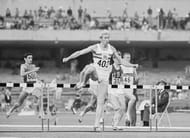
The Mexico City Games were the first edition with safety equipment for athletics. They were also part of the first edition, where all weather synthetic tracks were introduced for running. However, this wasn't the original purpose. The original purpose was to make a good surface for the equestrian events. The plan, unfortunately, didn't work.
Before the Mexico Olympics, running tracks were made of cinder. They were a mixture of cinder, a partly burnt form of ash, clay and loam. They were tougher to run on, and could be affected by the weather as well. However, from the Amsterdam Olympics in 1928, to the Tokyo Olympics in 1964, cinder tracks were the norm.
But not in the 1968 Mexico Olympics. For the first time, all weather synthetic tracks were introduced. This avoided heavy and slippery tracks. Apart from that, the synthetic tracks also gave runners extra speed. This was clearly visible in the men's 100m, when Jim Hines shocked the world by clocking 9.95 seconds. Even though it was wind aided, for the first time, a man ran 100m under 10 seconds.
First Olympics where Germany competed as East and West Germany
![Mexico Olympics 1968 - Where East And West Germany competed seperately [Image for Representational Purposes]](https://staticg.sportskeeda.com/editor/2021/07/7027d-16263681737410-800.jpg?w=190)
Following the second World War, Germany did not compete for a while. However, the International Olympic Committee brought them back in 1956, as United Germany. Until the Tokyo Olympics of 1964, Germany competed as one team, despite the nation being divided into two. Even if West Germany had won a gold medal for instance, the medal would be credited to Germany as a whole.
However, at the Mexico Olympics, for the first time, Germany competed as separate teams - East Germany and West Germany. Until the Barcelona Olympics of 1992, Germany competed in this fashion. Separation became official at the Munich Olympics, where both nations competed under separate flags, separate anthems etc.
East Germany had a prowess for athletics, which was shown at the Mexico Olympics. They achieved an overall fifth rank, owing to their nine gold medals, despite winning lesser medals in total than West Germany. Owing to their proximity to the Communist bloc, East Germany won more medals than West Germany, especially in their athletics. However, the tradition ended with the unification of Germany in 1990.
The Invention of Fosbury Flop and Bob Beamon's Flying Leap
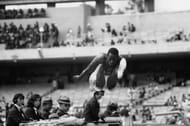
But if this is something the Mexico City Olympics are always remembered for, it is two things - Bob Beamon's "Flying Leap" and the "Fosbury Flop" by Dick Fosbury.
Bob Beamon was not exactly a conventional athlete. However, he had a knack for jumping. He was inspired by the exploits of American jumper Ralph Boston, who also became his unofficial mentor. Ralph had won a gold medal in Rome, and maintained his position on the podium with a silver medal at Tokyo in 1964.
However, when Bob took the leap in the long jump on October 18, he set a huge new world record for the long jump with a first jump of 8.90m, bettering the existing record by 55cm.
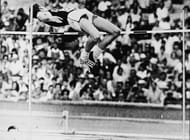
However, Bob was not the only wonder boy of this Olympics. Another American athlete, Richard Fosbury, did something that nobody imagined. He invented a whole new technique that changed the definition of high jump altogether.
How did the Fosbury Flop come into being? To quote Fosbury himself:
"When I first started, I had to change my body position first, start that first started the revolution, and over the next two years, the evolution."
Initially, he tried to use the upright scissors method. In this method, a jumper runs upright towards the bar, facing forward, and during his jump lifts his straight legs one at a time over the bar. However, he wasn't satisfied, and began to innovate. As he began to experiment with this technique, he gradually adapted it to make himself more comfortable and to get more height out of it.
Gradually, Fosbury shifted his positioning during the jump, such that by his senior year he had begun to go over the bar backwards, head-first, curving his body over the bar and kicking his legs up in the air at the end of the jump. This required him to land on his back, but prior to his junior year, his high school had replaced its wood chip landing pit with a softer material, so he was able to land safely. It was his iconic 'Fosbury Flop'.
The beginning of Indian hockey's downfall
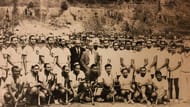
Not many would believe this, but somehow, the foundation of Indian hockey's downfall was laid during the Mexico City Olympics itself.
It was 1968. India were the undisputed champions. They had won back their honor at the Tokyo Olympics in style. They even won their first ever gold medal at the Asian Games in 1966, defeating Pakistan by 1-0 in the last minute of extra time.
However, none had anticipated the entry of a new villain - politics. The internal politics, which were somehow avoided by Indian Hockey Federation president Ashwini Kumar, an influential BSF officer, were left unchecked. Factions grew within the team. Unity is missing. Instead of team spirit, individualism reigned supreme.
Even two captains were sent instead of one. Worst of all, the hero of Tokyo Olympics, Shankar Lakshman, was not even chosen for this edition, despite him being completely fit and available. Though the federation relented after the protests, a hurt Shankar called it quits.
The signs of internal politics dominating Indian hockey are reflected in the performance. New Zealand surprised the world when they defeated India by a 2-1 margin in the group stages. However, India bounced back and walked into the semi-finals with ease. But the chinks were exposed by Australia, who defeated them in extra time. India defeated West Germany to clinch a bronze medal. But the damage was already done.
Debut of Praveen Kumar Sobti, India's 'Bheem'
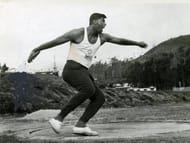
Not many know this, but before Praveen Kumar Sobti became famous as 'Bheem' from BR Chopra's 'Mahabharata', he was once a promising athlete, who represented India at the Olympics.
Praveen was barely 19 years old, when he joined the Border Security Force as a sepoy. He was equally adept at discus throws and hammer throws. Praveen won a gold medal at the 1966 Asian Games in discus throw, and a bronze medal in hammer throw.
Before he became famous as an actor, Praveen Kumar was famous as a champion athlete. He competed first in the hammer throw event at the Mexico Olympics in 1968, as a 21 year old Asian stalwart. Though he didn't succeed much, he came back as a discus thrower to the Munich Olympics in 1972.
Ultimately, it was as a television actor, that he found his true fame. He became famous for playing the role of Bheem in the BR Chopra directed 'Mahabharata'.
